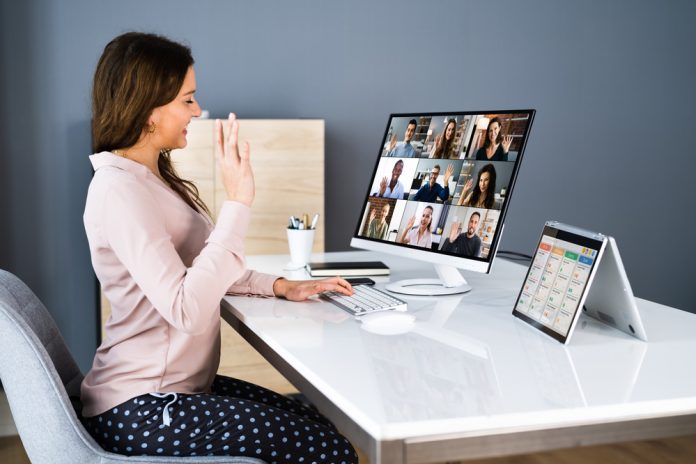
Approximately 70 percent of Americans were working from home during the pandemic, according to a PEW study, compared with around 20 percent before Coronavirus hit. So as things gradually return to normal, what does the future hold? Will workers be returning to the office in droves in the coming months? Perhaps not. The same study indicated that more than half would prefer to work from home all or part of the time. In another study, most respondents said being able to work from home for some of the time was the equivalent of getting a raise.
At the very least, we can presume that the future is all about hybrid working, with some of us working from home and some in the office. But what does this mean for productivity? Not much, apparently, with three-quarters of respondents saying they are at least as productive performing individual tasks remotely, and half saying they are at least as productive at performing collaborative tasks. Hybrid working may enable leaders to have the best of all possible worlds, with more productive, happier employees. Not to mention the potential to reduce office running costs.
So the hybrid way of working is almost inevitable. But that’s not to say the blended approach won’t present challenges. How can we adapt and make the most out of what seems inevitable?
Problem: Favoritism and preferential treatment for those in the office
Solutions:
- Level the playing field in team meetings. Have everyone join team calls from their own computer at their own workstation. It’s tempting for in-office colleagues to sit around the putative boardroom table together while colleagues working from home dial in. But we all know the remote experience is not the same, so level out the experience for all.
- Have a Yoda. That wise guru character from the Star Wars franchise has a place in team meetings. Rotate the role of the wise inclusion champion who can address microaggressions, interrupting, and behaviors that may exclude team members.
Problem: Collaborative and “stretch” tasks are given to in-office colleagues
Solutions:
- Look out for presentist bias—offering preference and opportunity to those who are present and visible. Record the opportunities, record who gets what, and identify the patterns.
- Offer meaningful problem-solving tasks for all. A recent HBR article focused on motivation and how team members’ motivation dipped when they had no choice in where they worked. The hybrid challenge may well exacerbate this phenomenon. The research indicated that giving all colleagues the opportunity to be creative and solve real business problems may be the answer, whether working from home or in the office.
- Put career development back on the agenda. The initial response to lockdowns was often to focus on delivery, outputs, and outcomes; career development seemed like a luxury we could no longer afford. As the situation eases and we move to hybrid models, we need to get careers and development back on track—and not just the development of those who are in the office.
Problem: Technology and meeting fatigue
Solutions:
- Learn from royalty and have stand-up meetings. The UK’s Queen Victoria had a limited attention span during Privy Council meetings, so she famously told her privy councilors (long-winded politicians) that they should stand. The meetings became shorter and more focused. The same principle is being applied to huddle or scrum stand-up meetings that are short, sharp, and to the point. More frequent but shorter meetings may be the future…so history tells us.
- Use the “cream of the morning” brain. Author Virginia Woolf recognized that many of us are more creative in the morning. Team meetings that focus on collaboration and complex interactions should be reserved for earlier in the day when our social skills and attention are more available.
- Monitor your microexpressions. We increasingly are invited to turn our cameras on and use headsets and earbuds in meetings to reduce fatigue and get closer to the face-to-face experience. Be aware that your every eye roll and tut will be amplified by the technology. Psychologists use the term “leakage” to describe our unintentional messaging. Stop the dripping tap and remember that you are very much on show.




